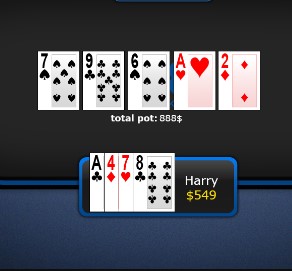Mistakes Players Transitioning from PLO to Omaha Hi-Lo Should Avoid

Pot-Limit Omaha poker and Omaha Hi-Lo are completely different games, but players still try and play the two games the same way. As a result, players transitioning from PLO to Omaha 8 or Better tend to donate money to the game while they are learning. Here are a few mistakes to avoid when making the transition from PLO to Omaha 8 or Better.
Overvaluing Middle and High Wrap Hands
In PL Omaha, hands such as 6-7-8-9, 8-9-10-J, or even K-Q-J-10 are considered very strong, especially if suited. In Omaha Hi-Lo, they will wind up costing you money more times than not.
First, you are shooting for half the pot unless the board comes high. When that happens, you will seldom get good value for your hand as the players playing low cards will get out of the way.
What usually happens is that someone will come in with a wrap hand, and flop something like two pair or a flush draw and then stay in even after it is apparent that their opponent is freerolling with their low hand.
These hands are best played from the blind or in very loose games. When playing in loose games, you are looking for a middling to high board where you can scoop with a big straight.
Failing to Slow Down on a Paired Board
When a board pairs in Omaha Hi-Lo, you need to slow down. This holds doubly true when low cards pair the board. The odds of a full house go up in most Omaha games due to the number of cards in play. When low cards pair, especially in a multi-way pot, you can almost bet money on someone having just made a full house.

Avoiding some of the mistakes above will help you donate less to the game while you are learning the game of Omaha Hi-Lo.
Not Protecting Sets or Made Hands
Another huge mistake I see players transitioning from PL Omaha to Omaha 8 or Better is failing to protect flopped sets or made hands vulnerable to redraws. An example would be flopping top set on a board of Jc-4s-5s.
Some people would try and slow players here when it is really best to bet and raise to attempt to think the field. Don’t give a free card when you have a hand that has any risk of being outdrawn.
There are a couple of main reasons to protect your sets or big hand. First, if someone has a weaker low draw, such as with an A-6 in the example above, they may fold to a bet assuming you have a better low draw.
Next, the player could just be drawing to half the pot. If they are drawing to half the pot, you want to make them pay and build up your potential winnings should they miss.
Failing to Bet When Freerolling
To freeroll in Omaha Hi-Lo means that you have one side of the pot locked up and have a redraw to the other half. Commonly, this means that the player has low locked up. An example would be you having Ac-2d-4c-10s on a flop of 3c-6d-8c. You have the nut low and a flush draw. You need to bet this hand since you have an uncounterfeitable low, the nut flush draw, and a straight draw.
Some people will not bet with the fear of being counterfeited and ignore the fact they are freerolling to a scoop. As a popular poker pro once told me, if you can’t get scooped, then you need to bet.
This is particularly true if you are playing three-handed or more. If you are three-handed or more, you can do no worse than break-even, even if you are counterfeited. Odds are you are leaving money on the table when you fail to bet when freerolling.
